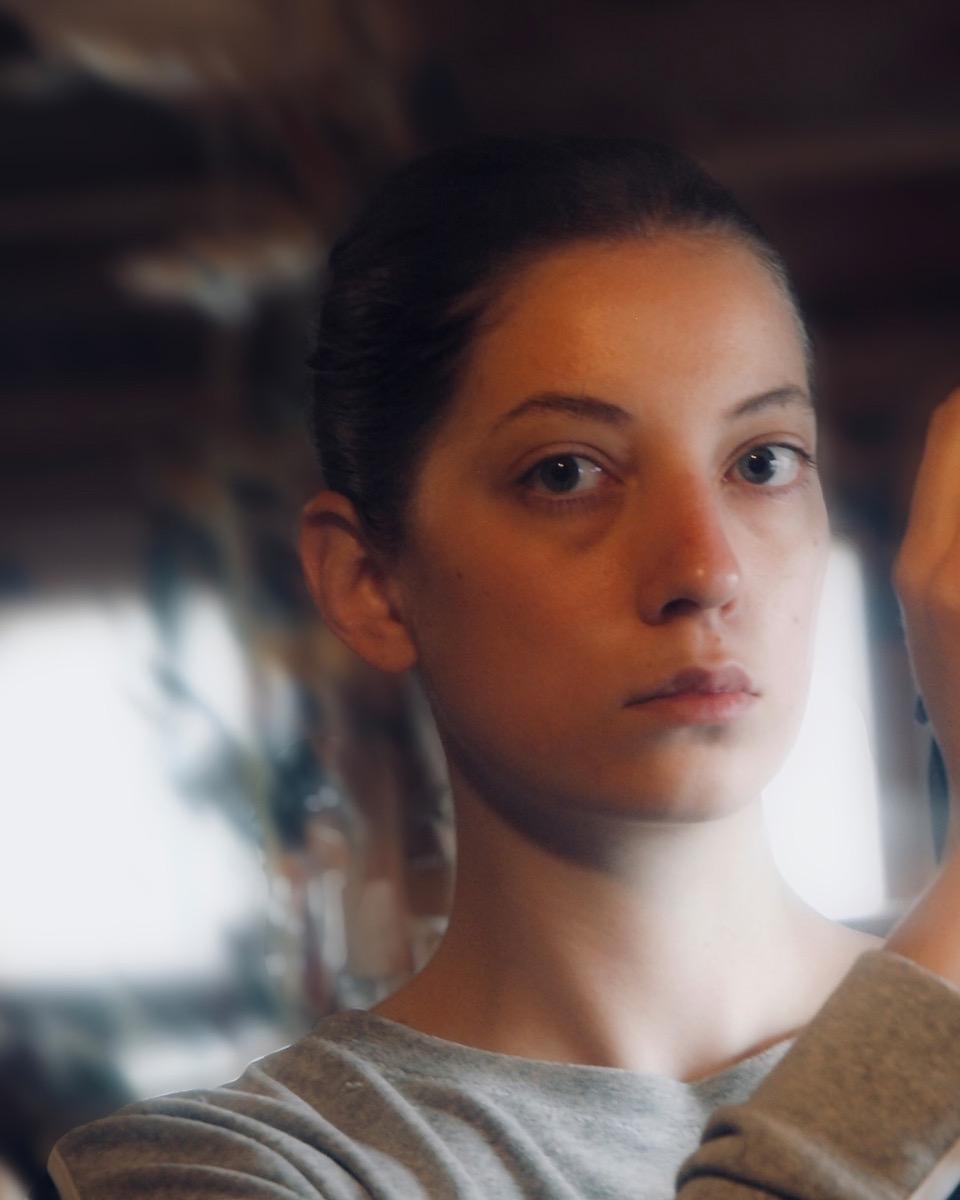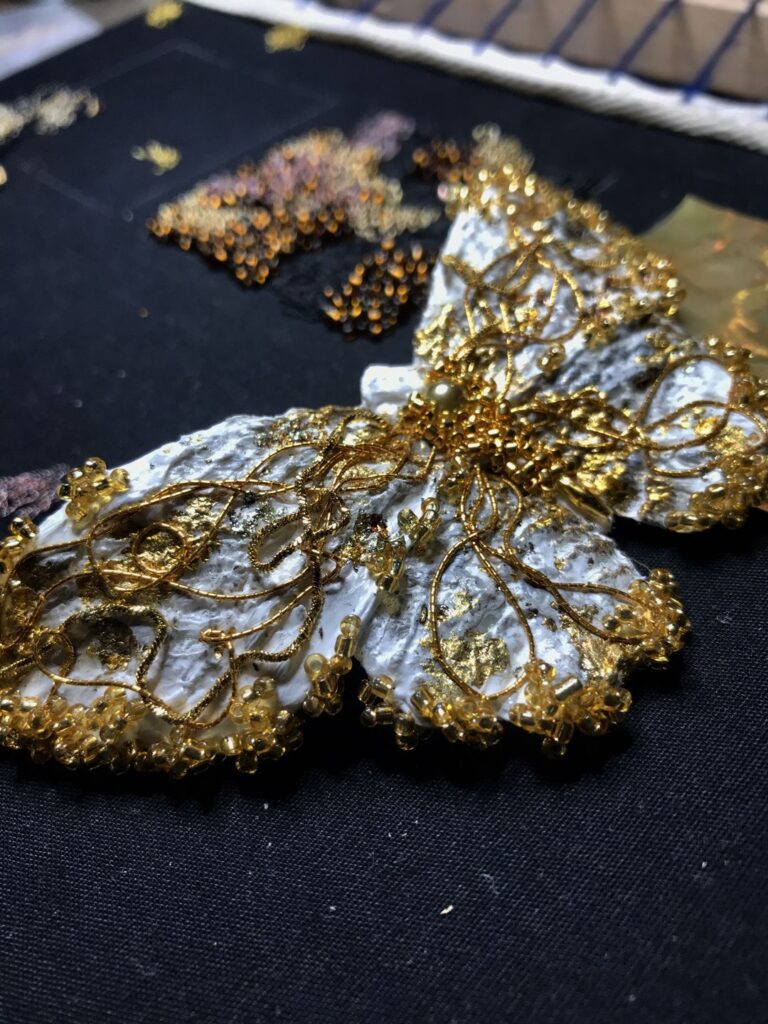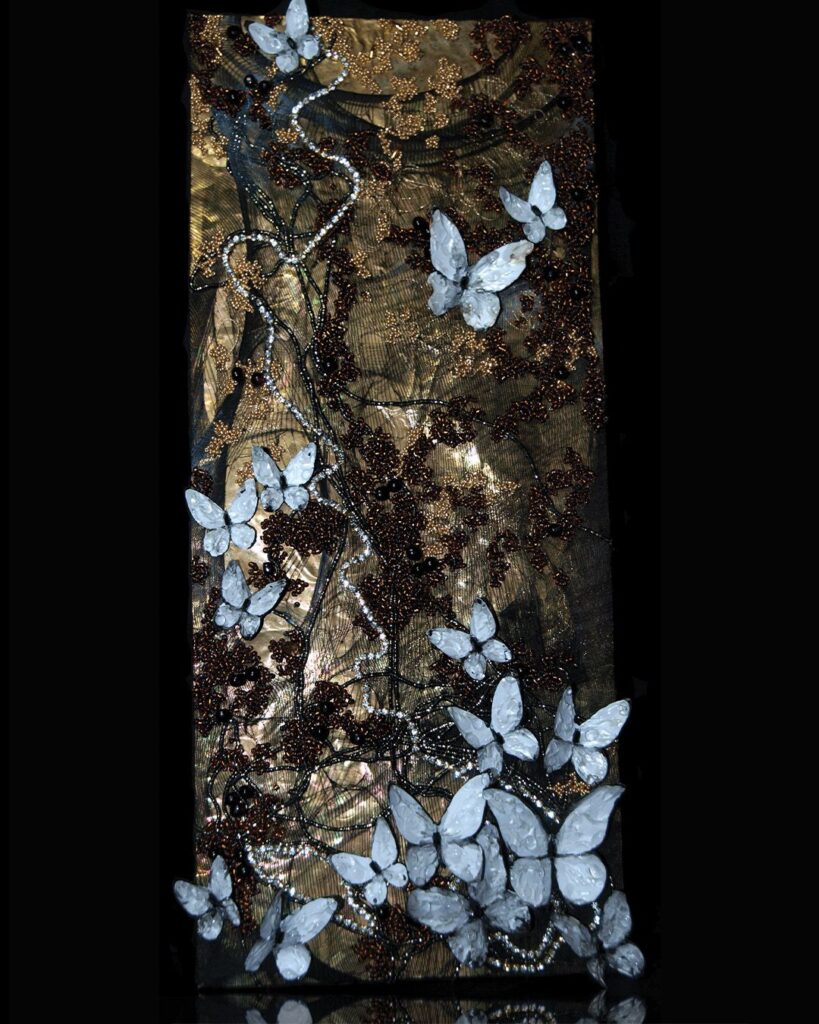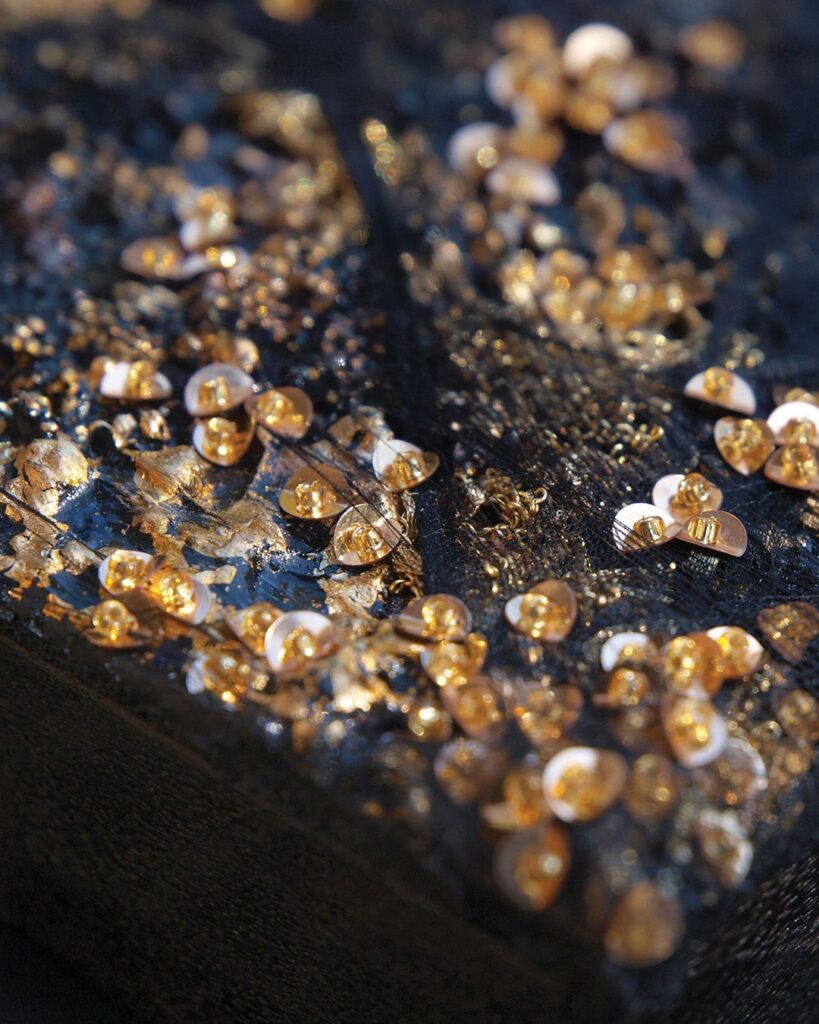
Featured: Aether
Severina Seidl – Guild Graduate in 2025 – reimagines traditional embroidery through innovative use of unconventional materials
Severina Seidl is an artist, designer, and hand embroiderer whose practice reimagines traditional embroidery through innovative use of unconventional materials, often drawn from fine art. Her journey began with a degree in fashion design, but a deep-rooted passion for art led her to the Royal School of Needlework in London, where she found a way to merge her artistic and fashion interests.
Her work is defined by an experimental approach—translating the organic spontaneity of her sketches into richly textured embroidered pieces. Innovation is central to her process, as she constantly pushes the boundaries of material and technique to pursue her artistic vision. Over time, her style has evolved towards abstraction and a focus on texture, with an impressionistic quality that invites emotional interpretation. She favours imperfection, deconstruction, and rawness over conventional notions of perfection.

Her recent work, Maleficium, draws inspiration from Krabat by Otfried Preußler—a novel that shaped her youth and still resonates with her romantic, melancholic sensibility. The piece explores themes of despair and hope through a visual narrative marked by contrast and duality. Ravens and butterflies symbolise the interplay of darkness and light, while abstract forms express the emotional tension at the core of the piece.
Using experimental goldwork embroidery—traditionally seen in military contexts—Severina contrasts this with elements of beading, painting, and sculptural stitching. Inspired by the baroque still lifes of Rachel Ruysch, she layers textures and techniques to invite close observation and personal interpretation.
Maleficium is a convergence of narrative, material, and emotion. Its composition moves from black-on-black opacity to lighter, more luminous areas, reflecting an emotional journey from solitude and fear to the quiet resilience of hope.forward.

She says:
I began my journey in textiles with a degree in Fashion Design in Germany after completing my Abitur. I had done some rudimentary knitting and weaving in primary school, but didn’t pursue it further. The secondary school I attended was more focused on fine arts, and I mainly worked on drawings and sketches. Even in fashion school, the emphasis was placed on industrial production techniques and illustration.
My dream was to work in Haute Couture, so I sought out a place where I could learn embroidery, and discovered that the Royal School of Needlework was the only institution offering a degree in Hand Embroidery.
.

During my three years at the RSN, I subconsciously incorporated painting and always maintained a subtle layer of storytelling in my practice. However, in preparation for my third and final year, I made a conscious effort to take this further by introducing more fine art materials, such as acrylic paints, gilding paints, and unique elements like steel wire mesh, PVC sheets, and metal leaf.

Studying for the BA degree at the Royal School of Needlework is incredibly valuable if you want to truly push the boundaries of embroidery. The tutors are extremely supportive and actively encourage you to experiment with unique materials and techniques. They provide thoughtful guidance to help each student develop a distinctive design language.
In the first two years, you have the opportunity to learn a range of traditional techniques from a technically precise perspective, as they are used in the RSN studio — including Goldwork, Whitework, Silk Shading, and Tambour, among others. You’re equipped with the tools and knowledge to create your own original works from concept to completion
Additionally, the course offers fantastic opportunities to collaborate with established names in the industry, such as Lock & Co. Hatters and the embroidery team from Alexander McQueen.

All work featured by Severina Seidl
Website: Severina Seidl | Hand Embroidery Artist
